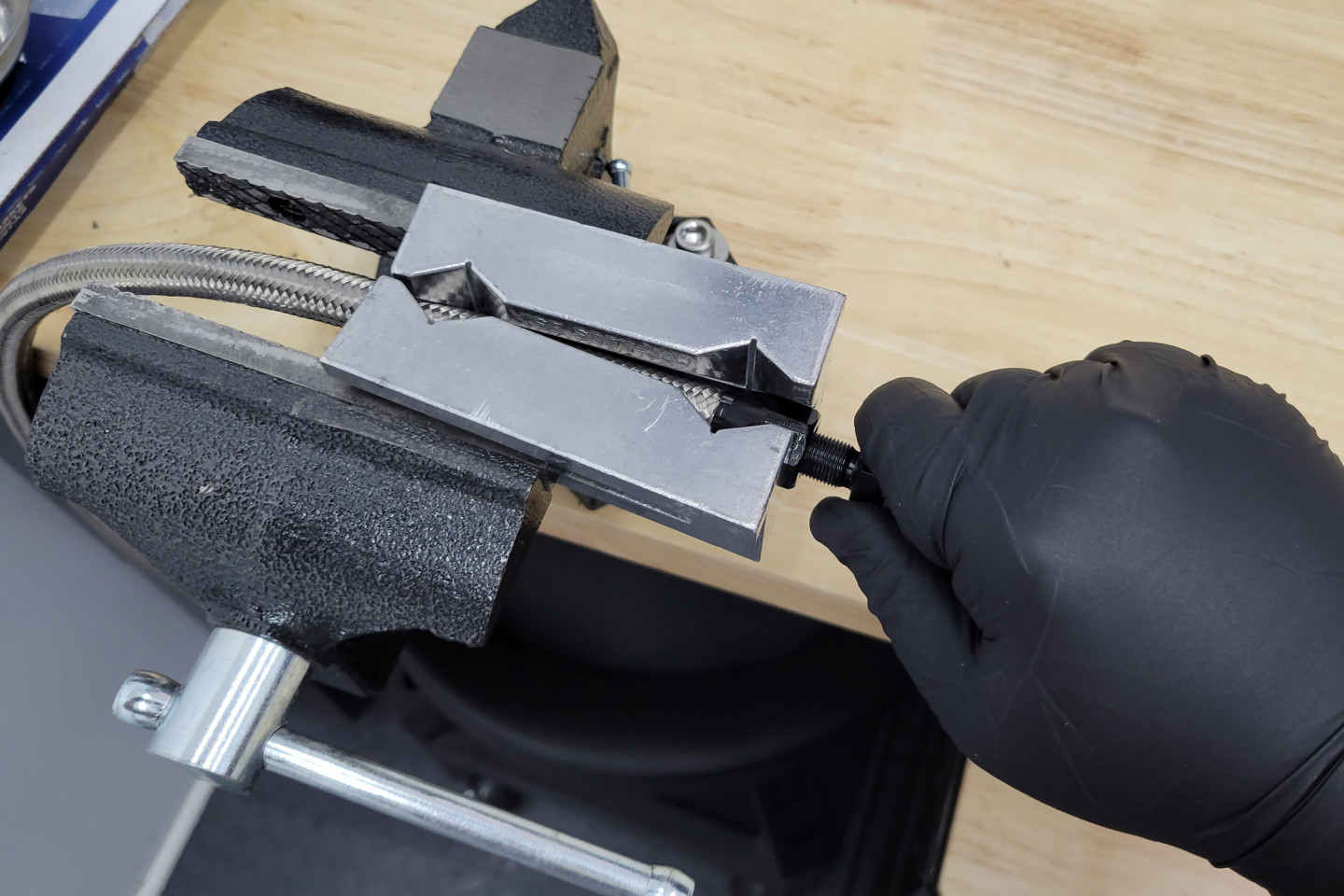In our recent article on assembling braided stainless hose and AN fittings, we showed the process of building AN lines. Upon reading the article, Koul Tools’ founder, Dick Raczuk reached out with an additional tip on assembling the fitting on the hose that was too good not to share with everyone. A quick trip to the shop confirms it works and is a bit of a game-changer — for us, anyway.
Once you’ve gotten the braided stainless hose seated in the compression nut with the Koul Tools AN Hose Assembly Tool, the most difficult part of the fight is over. However, there is still a battle to undertake. We normally deal with the potential of the hose pushing out of the nut by pushing the hose in with one hand while inserting the tapered end of the fitting with the other.
In the left photo, notice the offset of the soft jaws and the vise jaws themselves. This allows the soft jaws to not only apply clamping force to the nut but also clamp the hose itself in place, as seen in the right photo.
This method works, both with and even sometimes without a vise and soft jaws. However, it can be tricky and require significant dexterity and coordination, while tying up both hands. This can prove to be an issue with especially stubborn fittings. To that end, Raczuk came up with this methodology that will allow the vise soft jaws to hold both the compression nut and the hose itself in the vise, freeing up both hands for dealing with inserting the tapered cone and getting the threads started.
By using asymmetrical leverage from the vise soft jaws, you can exert an even amount of pressure on both the nut and the stainless braided hose itself, preventing it from backing out while you apply pressure from the front. The trick is to have the vise jaws only halfway up the soft jaws, allowing them to angle inward towards the hose, while still preventing the nut from rotating. This will work with both flat jaws as well as AN-specific soft jaws, with the latter reducing the risk of damaging the hose and fittings, thanks to its softened edges and hex cutouts.

Since the vise jaws hold both the nut and the hose securely, you can free up your other hand to either help get the threads started, or, in our case, free up a hand to take a picture of our hand being freed up.





